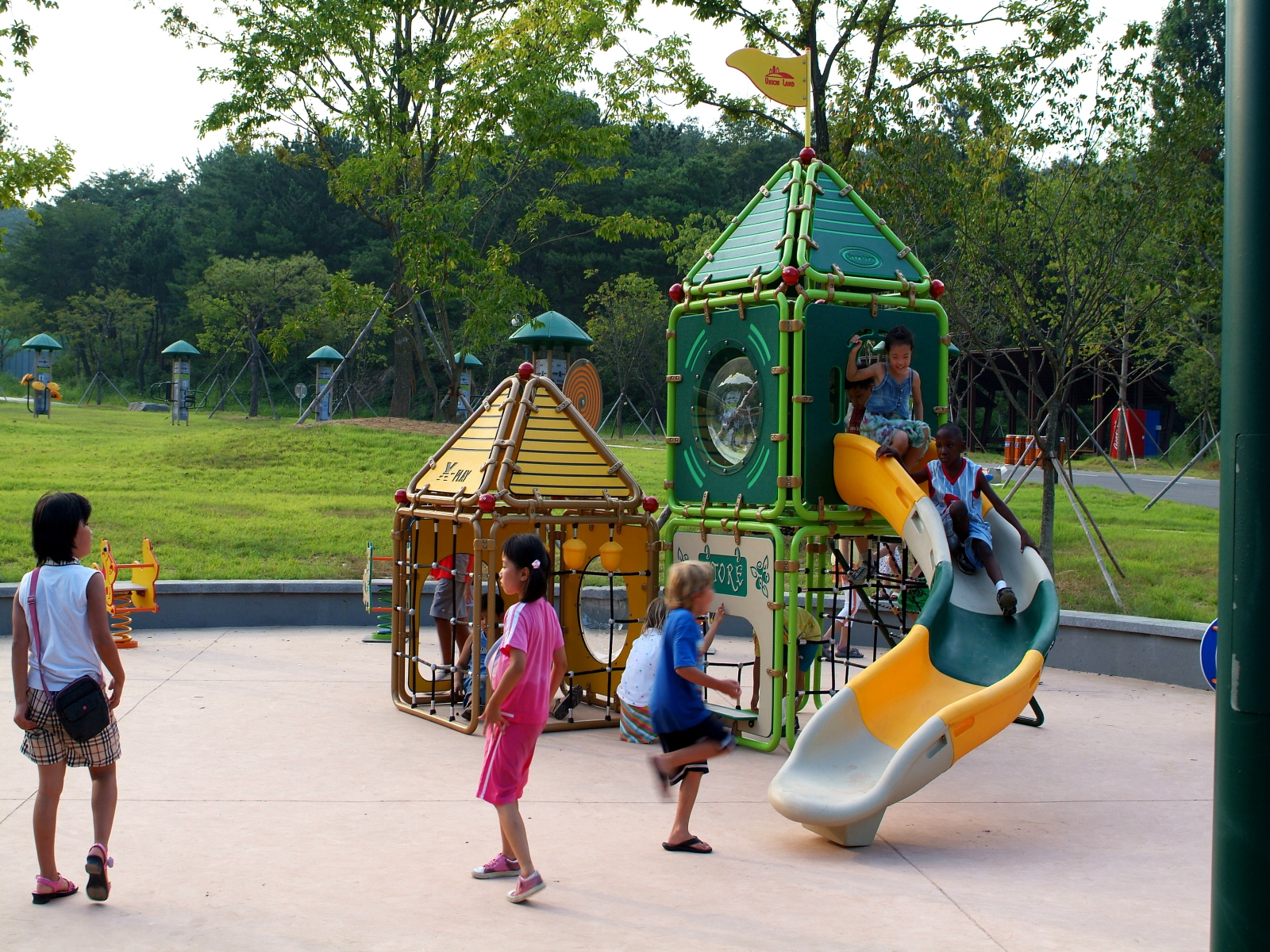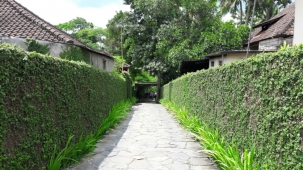
관광에 와서 친정 조경을 보다: 같음과 다름

Tourism and Landscape Architecture: Similarities and Differences
관광은 사람의 이동 현상이다. 그리고 그 일상을
벗어나는 이동은 자의에 의한 자발적인 평화적 인간
이동이다. 따라서 관광은 이동의 과정, 이동한 관광공간의
어메니티와 프로그램, 경험, 그리고 회상을 포괄한다.
그런데 관광은 일정한 시간(하루 이상 일 년 이하) 또는 일정한
거리(편도 50마일 또는 100마일) 기준 중 어느 하나를 채택하는
경향이 있다. 관광이 여가나 휴양을 다루는 조경과 다른
이유 중의 하나이다.
조경의 관점에서 관광과 가장 관련이 있는 것은
관광공간의 창조가 아닐까 싶다. 공간은 행위 및
사회관계가 이루어지는 장소이고, 이러한 맥락에서는
관광공간은 정원이나 공원으로 대표되는 조경공간과
다르지 않다. 공간은 내용물을 담아내는 그릇이고, 공간의
계획과 설계는 결국 담아낼 내용물 즉, 콘텐츠의 준비와
이해에서 시작된다. 따라서 공간의 측면에서 관광지나
리조트 개발의 과정은 공원의 계획 설계 및 건설 과정과도
다르지 않다.
관광사회학적 관점에서 관광은 일상생활과 사회적인
속박으로부터 사회적, 공간적 분리가 이루어지고, 시간과
공간을 초월하는 반구조(anti-structure) 공간의 경계영역(liminal
zone)에서 자아를 발견하고, 신성한 공간을 경험하며,
긴밀한 사회적 유대관계 또는 커뮤니타스(communitas)를
느낀다. 즉 관광공간은 반구조 공간으로 일상공간과는
구분되고, 관광객은 친숙한 일상공간을 떠나 먼 탈일상의
공간으로 이동하고(여기에서 자기성찰 내지는 도덕과 규범이 무시되는
전도현상을 거쳐) 다시 일상공간으로 돌아온다.
결국 조경이 여가와 휴양의 일상적 활동과 공간을
대상으로 한다면 관광은 탈일상적 활동과 공간을
대상으로 한다. 조경의 주요 대상인 정원과 공원은
일상적 생활공간이지만 관광지와 리조트는 탈일상의
관광공간이다. 물론 인사동 거리 같은 관광 명소나
관광도시의 경우 지역주민에게는 삶의 터전인
일상공간이지만 관광객에게는 탈일상의 유희적 공간이
된다. 관광이 조경과 또 다른 이유이다.
조경의 핵심 대상인 공원은 공공영역이다. 공원은
구호적 서비스와는 또 다른 발전적 공공서비스의 하나로
필자는 다다익선, 대대익선이라고 주장한다. 공원이
발전적 공공서비스의 하나라는 것은 공공재원에 의해
수익성에 대한 고려 없이 공급되고, 관리되어야 한다는
것이다. 즉, 공원 조성은 여가권이라는 국민의 기본 권리의
문제로 국가와 지방정부는 국민의 삶의 질 증진을 위하여
공원을 서비스하여야 한다는 것이다. 이에 시비를 거는
사람은 이제 거의 없는 듯하다.
필자는 여가권과 같은 맥락에서 국민의 기본권으로서
관광권을 주장한다. 좀 더 과격하게 관광호텔도 공항과
도로 같은 기반시설로 인정하여 국가에서 책임질 것과
관광지에 일상적 주거를 허용하는 등 주거단지와 동등한
지위를 요구하기도 한다. 물론 관광이 공공 영역이
되어야 한다는 필자의 주장에 박수보다는 코웃음을 치는
사람들이 훨씬 많다는 것은 명백한 사실이며, 결국 관광은
공공이 아닌 사적 영역, 특히 상업적 영역이다. 미련이
남아서 덧붙이건대, 1790년에 프랑스에서 구즈(Gouges)가
처음으로 여성에게도 참정권을 주어야 한다고 주장할 때
여성 대통령을 생각이나 하였을까?
이처럼 공공서비스의 하나인 조경의 공원과는 달리
관광은 상업적 영역이고 관광공간은 돈을 벌어내는
상업적 공간이다. 따라서 관광공간의 조성은 철저하게
자본의 투입과 수익의 산출이라는 사업성에 근거하여
논의된다. 또 과격한 표현을 빌리건대, 공원을 조성하면서
사업성을 따져야 한다는 것이 미친 짓이라면 관광지를
개발하면서 사업성을 무시해도 된다는 것은 아직은 위의
구즈의 운명과 다를 바가 없다. 관광이 조경과 또다시 다른
이유이다. 참고로 구즈는 “여성이 단두대에 오를 권리가
있다면 의정단상에도 오를 권리가 있다.”는 유명한 말을
남기고 단두대의 이슬로 사라졌다.
물론 필자는 관광이 이제 일탈의 특별한 체험과
경험이 아니라 일상적 삶의 연장으로서 성찰과 회복의
과정이라는 보편적 의미로 재정립할 필요가 있음을
주장하기도 한다. 관광객을 위한 특별한 거리가
아니라 일상의 모습을 진솔하게 관광객과 공유하는
관점에서 접근하는 것이 관광객과 지역주민의 사회적
관계를 강화하는 등 관광이 건강한 사회의 기반으로
자리매김하는데 도움이 된다는 것이다.
관광에 와서 친정 조경을 보면서 세 가지의 같음과
다름을 비추어 보았다. 단언하건데, 이는 전체 관광 중에서
필자가 친숙한 관광공간의 차원에 한정된 것이니 오해는
없어야 하겠다. 주제 넘는 소리지만 돌아서서 친정을
보니 땅을 다루는 종합과학예술이자 생태공학으로서
주변 지식과 기술을 아우르는 총론적 조정자 역할이
아쉽고, 너무 세분화되어 각론과 기능에 집착하는 느낌이
있음을 고백하지 않을 수 없다. 아무튼 세상은 변하고
있고, 산업이든 학문이든 융복합의 시대가 도래 하였다.
서툴게나마 같음과 다름을 반추하고, 인정하고, 이해하는
것이 융복합의 시대정신에 도움이 될 수 있을 듯하다.
조금은 크게 보고 새로 씨줄과 날줄을 잡으면서 바야흐로
100세 시대의 여가와 관광을 같이 고민하여야 할 때이다.
Tourism, in essence, is migration of people, and
it is escaping, deliberately and peacefully, from
everyday life. As a result, tourism inevitably includes
the process of moving from one place to another,
amenities and programs at a destination, experience,
and retrospection. Tourism tends to be characterized
by certain amount of time (over one day and under
one year) and a certain distance (50 or 100 miles
one-way). This is where the biggest difference lies
between tourism and landscape architecture dealing
with leisure or holidays.
One of the areas of tourism where landscape
architecture can play the most significant role could
be creating space for tourists. Space means a place
that actions and socialization take place, and, in this
context, the space of landscape architecture, aptly
represented by parks and gardens, is not much
different from that of tourism. Space is, in a sense, a
container of contents, and, therefore, planning and
designing of space begins with understanding and
preparing of contents. Thus, the development process
of tourist attractions or holiday resorts has a lot in
common with that of parks and gardens.
Tourism provides people with separation, social and
spatial, from their daily life and constraints of society,
and opportunities to find their self in the liminal
zone of anti-structure, transcending time and space,
experience some sacred space, and feel strong social
ties or so-called ‘communitas’. In other words, space
of tourism is distinct from that of everyday life in that
it is anti-structural space, and tourists escape from
their ‘ordinary world’, move into some strange areas,
and return to their own space of everyday living.
The subjects of landscape architecture are routine
activities and spaces of leisure and holidays, whereas
those of tourism are activities and spaces away
from the world we normally live in. Gardens and
parks are the places with which we live everyday, but
tourist attractions and holiday resorts are spaces
of tourism, far away from routine. Although some
tourist destinations, of course, provide a livelihood
that has sustained a community of local people, they
are, at the same time, spaces of entertainment and
enjoyment for tourists. This is another reason that
tourism differs from landscape architecture.
A park, one of the key elements of landscape
architecture, is a public open space. It is one of the
most advances public services, and I have maintained
that the more, the better, and the bigger, the better.
Parks being the advanced public service means that
they should be constructed and managed without
considerations on profits, based on public financial
resources. In other words, the creation of parks is
closely intertwined with a people’s fundamental right
to pursue happiness through leisure and holidays,
and the central and local governments should provide
sufficient amount of parks to enhance the quality of
life for their citizens. There barely seems to be any
doubt about this argument.
I would like to advocate the right for tourism as
another way to pursue happiness. Moreover, I strongly
insist that tourist hotels be considered as part of
social infrastructure like airports and freeways, and
tourist destinations be granted the same status as
residential areas providing ordinary living space.
Certainly I am well aware of those who might laugh at
this idea, and of the fact that tourism belongs not so
much to public sector as to private and commercial
sector. Please try to remember this: when Abraham
Lincoln struggled to abolish slavery in the United
States some 150 years ago, no one ever imagined
that they would have an African-American president
someday.
Different from parks, one of public services, tourism
follows the rules of commercial sector, and space for
tourism is designed to be profitable. Consequently,
the development of tourism spaces is based on
profitability. In addition, just as it appears irrational
to evaluate profitability of constructing parks, it also
seems absurd not to estimate business value of
creating tourist attractions. Here we find one more
reason why landscape architecture is distinct from
tourism.
I believe that tourism is not just about experiencing
special activities away from daily life, but about
extending everyday life into another dimension where
soul-searching and recovery of self take place. It will
help strengthen social ties between visitors and local
residents for them to share some sincere aspects
of everyday routine rather than to develop ‘a special
kind of streets or plazas’ designed solely for tourists.
This approach will contribute to making tourism one
of essential foundations of sound society.
So far, we have discussed three factors that
distinguishing landscape architecture from tourism.
In my humble opinion, even if landscape architecture,
which specialize in dealing with various aspects of
earth and its surroundings as comprehensive science
and eco-technology, has enormous potential to serve
as an active mediator well equipped with expertise
and techniques required, it pays too much attention
to small details and itemized discussions. The
world has been changing, and we are watching the
emergence of the age of hybrid. I hope that it will help
adapt to this new trend to remember and understand
the similarities and differences between landscape
architecture and tourism. It would be wise for us to
take a look at the big picture and discuss together
what the future might have in store for leisure and
tourism industry in the age of the life expectancy of
100 years.
- 고동완 · 경기대학교 관광개발학과 교수, 공학(조경학)박사
-
다른기사 보기
dwko@kgu.ac.kr




















